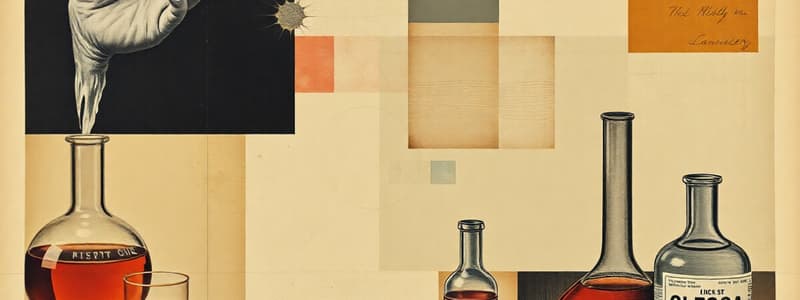Podcast
Questions and Answers
What is the law of conservation of mass in chemical reactions?
What is the law of conservation of mass in chemical reactions?
- Mass remains constant; it cannot be created or destroyed. (correct)
- Products have a mass that cannot be measured.
- Mass can be created or destroyed.
- The mass of reactants is always greater than the mass of products.
In the equation Na + Cl = NaCl, what are Na and Cl known as?
In the equation Na + Cl = NaCl, what are Na and Cl known as?
- Reagents
- Products
- Catalysts
- Reactants (correct)
What does Lavoisier's work primarily demonstrate?
What does Lavoisier's work primarily demonstrate?
- Mass is conserved in chemical reactions. (correct)
- Mass can vary in chemical reactions.
- Elements cannot combine to form compounds.
- The mass of reactants does not equal the mass of products.
How are chemical reactions represented?
How are chemical reactions represented?
Which of the following is an example of a chemical equation?
Which of the following is an example of a chemical equation?
Flashcards
Law of Conservation of Mass
Law of Conservation of Mass
Mass is neither created nor destroyed during chemical reactions.
Chemical Equation
Chemical Equation
A way to show reactants and products in a reaction.
Reactants
Reactants
Substances that react to form products in a chemical reaction.
Products
Products
Signup and view all the flashcards
Chemical Reaction
Chemical Reaction
Signup and view all the flashcards




